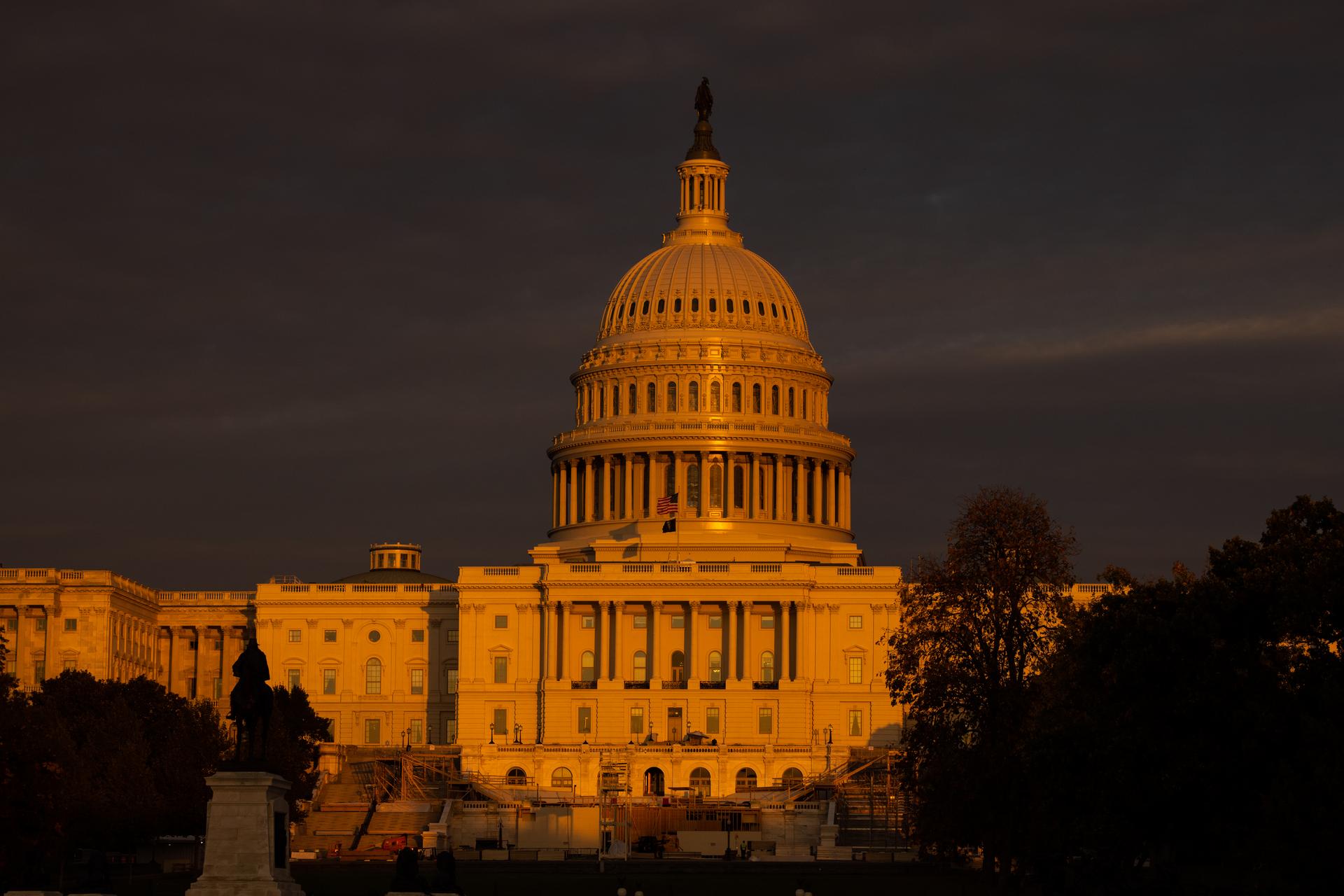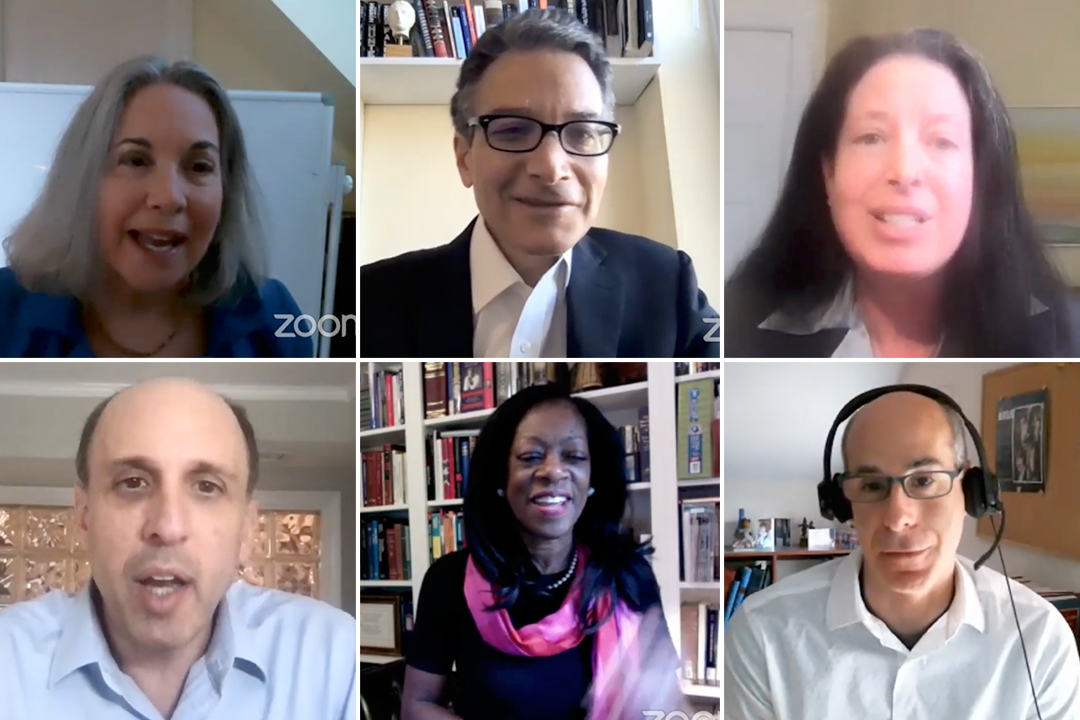By Briahnna Brown
There are two political visions gaining traction in the United States today, said Elizabeth Anker, associate professor of American studies and political science in the George Washington University Columbian College of Arts and Sciences.
One vision, which was exemplified through the Jan. 6 insurrection led by President Donald Trump’s supporters, is an authoritarian vision tied to the desire to wield power over marginalized people as a source of control or pleasure, Dr. Anker said.
“They perform visions of power in which dominating over other people and exercising power over other people without any consequences are marks of one's own individual worth and one's own individual freedom,” she said.
This expression of white supremacist power is not at all new, Dr. Anker said, and has been present in the United States since its inception, but it has been gaining strength recently because it has been more explicit in major institutions. She said that it is also a response to a strengthening of the other political vision in this country: one of mutual democracy and true equality in race and gender, which has seen multigenerational support through movements such as Black Lives Matter.
“The insurrection happened, I think, because this truly democratic vision has been gaining significant strength,” Dr. Anker said. “It is threatening to those who invest energy and worth in the authoritarianism of white supremacy.”
Dr. Anker, whose research centers on the concept of freedom in American politics, shared her insights during the virtual panel organized by the Humanities Center, an interdisciplinary organization that connects humanities researchers while promoting their work to the broader community. This year, eleven fellows are developing “Culture in Crisis” research projects. The Center also aims to bring humanistic research into the classroom, to broaden the cultural understanding of GWU students, and to forge student-faculty research partnerships. This was the first public event for the center, and it drew 326 unique attendees. The session was moderated by professors Lynn Westwater, Melani McAlister, a center fellow this year, and Gayle Wald, one of the centers steering committee members.
During the “Democracy Under Siege” Zoom panel on Wednesday night, Jamie Cohen-Cole, associate professor of American Studies in CCAS who co-leads the center with Lynn Westwater, gave a brief presentation on how the post-truth era under Mr. Trump led to the Jan. 6 insurrection because of a prevalence of misinformation, such as the 2020 election being stolen, and a fundamental misunderstanding of where truth comes from. Dr. Cohen-Cole said that one main problem is that both major media and leading scholars have erroneously sought to find truth by a method of balancing “both sides” of the political spectrum. Such an approach confuses truth with political centrism and has left these entities unprepared to deal with falsehoods.
Daniel Schwartz, a professor of history in CCAS whose research focuses on modern European and American Jewish intellectual, cultural and urban history, discussed the anti-Semitism present on Jan. 6, and how a “Camp Auschwitz” sweatshirt can coexist with an Israeli flag as symbols of the same white supremacist movement. He explained that pro-Israel Zionism became a constituent factor in what it means to be an evangelical Christian amid Mr. Trump’s embrace of the Israeli right.
Amber Musser, a professor of American studies in CCAS whose research focuses on critical race and gender theories, discussed the underlying issues of anti-Blackness related to the riots, specifically the differential treatment of the Jan. 6 demonstrators and the Black Lives Matter demonstrators in Washington, D.C., during the summer in 2020.
Dr. Musser said that the differential treatment was especially highlighted through images of Mr. Trump’s supporters taking statues and podiums from the Capitol building as if they were souvenirs. It also served as reconfirmation of the way Black people are treated in the United States, especially considering the language of “looting” that was present during protests over the summer, she said. It all ties to the history of the surveillance of Black people, Dr. Musser said, which stems from anxieties around property and ownership—the idea that Black people will take things that rightfully belong to other people.
“That anxiety about people taking what isn't rightfully theirs is underlying a lot of the aggressive surveillance around Black people and this over-policing that we notice,” Dr. Musser said. “The other side of it is this investment in possessive whiteness, and by that, I mean that…if there's this concept of theft, the other side of it is the idea that something belongs inherently to white people.
“It wasn't so much about the particular items that they were taking, but it was the idea that there's this inherent ability to possess and signal power through that ability to possess,” Dr. Musser said. “That's sort of the part of this constellation of whiteness as property.”
Elaine Peña, a CCAS associate professor of American Studies whose research centers around borders, built on that concept of property by discussing the symbolism behind the calls for building border walls between the United States and Mexico over the past four years as well as additional barriers around government buildings in D.C. These physical barriers are less about protecting the places they surround, she said, and more about symbolically upholding power structures.
“The tragic paradox here is that it took border myths coming to the nation’s capital to signal that democracy is indeed under siege,” Dr. Peña said. “Moving forward, President-elect Biden has an opportunity to confront this ongoing source of shame and insecurity—he can stop border wall construction during his first hours in office.
“Leaving the tracks of border wall that had been built alone to fester would be a missed opportunity,” Dr. Peña said. “The leaps and bounds we have made as a country in the way we talk about racial justice over the past four years, for better or for worse, have proven that great harm can come from ignoring Confederate statues and monuments that condone and glorify prejudice. We must not let the present become the past that our children will regret looking at.”




